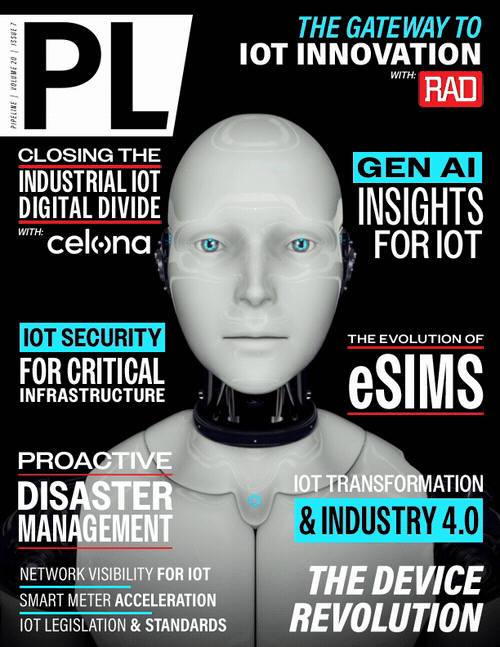The Industrial IoT Digital Divide
By: Rajeev Shah

Let’s start with the definition of Industrial IoT (IIoT). It is an ecosystem of devices, sensors, applications, and networking equipment that work together to collect, monitor, and analyze data from industrial operations to increase visibility and enhance troubleshooting and maintenance capabilities. The overall goal is to improve productivity and increase operational efficiency.
The market is flooded with smart devices for Industrial IoT, including sensors, connected PLC machines, scanners, ruggedized tablets, automated forklifts (AFLs), automated guided vehicles (AGVs), and autonomous mobile robots (AMRs). The problem is that this modern technology is rendered useless without robust connectivity to ensure that the tools always work, no matter where they travel in the plant, the warehouse, the yard, or the remote reaches of the field.
Industrial environments have traditionally relied heavily on wired connectivity protocols such as PROFIBUS, PROFINET, Modbus, and EtherCAT to connect their IIoT devices. With the cost of wired connectivity coming in at $8-$18 per square foot, connecting all remote IIoT devices with cables becomes economically unfeasible. For example, consider a pressure sensor monitoring pipeline at a remote location in an oil refinery, or a security camera monitoring a remote gate at the periphery of the facility.
When it comes to wireless solutions, we are constantly having discussions with customers who ask if their Wi-Fi is “good enough,” and it is increasingly not! It is certainly not good enough for mission-critical applications. Any mine, refinery, warehouse, or manufacturing plant that is trying to add automation to their operation, both indoors and out, is quickly running into the limitations of Wi-Fi. As an example, handover challenges mean that you cannot reliably and safely run AGVs and AFLs on Wi-Fi. Another common experience we hear from customers is that even if you can run reliably in a small section of the warehouse where Wi-Fi coverage is not impeded by racks of goods, you cannot run that AGV down an aisle or into a corner, and network performance plummets as you try to add more devices onto the network.
Here are just some environments where Wi-Fi is simply not good enough:

Two other connectivity options in use today, Low Power Wide Area Network (LPWAN) and public cellular, are also insufficient to meet modern automation needs. While LPWAN technologies work well for low bandwidth IoT sensing, they will not work for applications like computer vision and robotics that require high bandwidth, low latency connectivity. IoT devices connecting using public cellular service also face coverage and QoS challenges, and the standard business model of metering and charging for data quickly becomes cost prohibitive. Needlessly transporting sensitive business data over a public cellular network causes deep security concerns as well.
As described in the definition of Industrial IoT, gaining an ROI from an IIoT project relies on gathering high quality data from every device deployed so the data can be analyzed for continuous improvement. This is especially true as AI can increasingly be applied to monitor, troubleshoot, and apply new rules to any areas of operational inefficiency. Yet today, roughly 90 percent of all data generated in the field is classified as stranded data because it cannot be accessed by core process control applications. Innovations in predictive maintenance and digital twins are not possible without reliable access to large amounts of data.



















